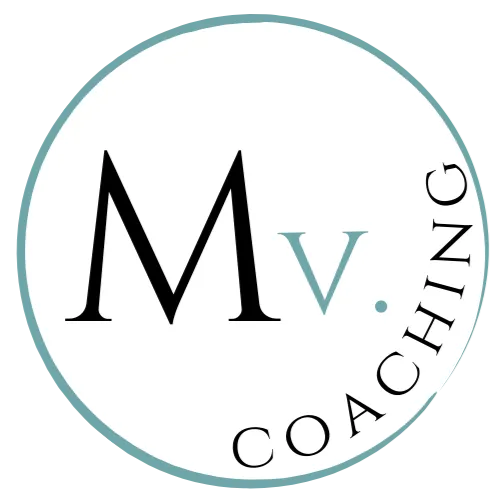Blog
Welcome to my Personal Blog on all things Life Coaching, Transformation, Neuroscience, Hypnotherapy, and more. I'll be sharing reflections on topics related to relationships, health, wealth, business, peak performance, Business Agility, Executive Leadership, and more.
To schedule a free consultation with me, please use the link below.

Food Psychology and Emotional Triggers: Why Do We Eat?
Food psychology tells us that many of our eating habits are driven not by physical hunger but by emotional needs. This is why food becomes a form of comfort for so many. In times of stress, sadness, or even boredom, food serves as a distraction, a source of pleasure, or an emotional balm. But what are the thoughts and feelings that lead us to reach for comfort food?
This is where Timeline Therapy can be incredibly useful. By examining our thoughts and emotions in the moments leading up to our desire to eat, we can uncover deeper patterns.
Consider these questions to explore your relationship with food through Timeline Therapy:
What are you thinking/feeling before you want to eat?
Are you truly hungry, or are you trying to avoid a difficult emotion? For example, feelings of stress, loneliness, or even boredom might drive you to seek out food as a way to cope.What does the food you desire represent to you?
Certain foods can carry emotional meaning. For example, sweet treats might represent comfort and nostalgia, while salty snacks might provide a sense of temporary relief from stress. Understanding what the food symbolizes for you can be a key step in breaking the cycle of emotional eating.What happens as you notice the taste experience is fleeting?
Many people reach for food hoping it will make them feel better, but the satisfaction is often short-lived. As the pleasurable taste fades, what thoughts and feelings arise? Are you left feeling disappointed or guilty?What are the thoughts/feelings you have after the meal you desire?
After eating, do you feel shame, regret, or a sense of unfulfillment? These feelings can often perpetuate the cycle of emotional eating, creating a loop where food is used to cope with the very emotions it generates.
Limiting Beliefs and Diet Paradigms: What Holds Us Back from Portion Control?
Our eating habits are also deeply shaped by the beliefs and paradigms we’ve absorbed over time. These limiting beliefs can prevent us from consciously managing portion control and lead us into unhealthy eating patterns. Here are some common beliefs that often sabotage our relationship with food:
"I have to finish my plate."
Many of us were raised with the belief that we must finish everything on our plates, regardless of how full we feel. This belief can lead to overeating, as we ignore our body's signals and eat based on external cues rather than hunger."Eating my feelings."
The idea that food can comfort or soothe emotional pain is common, but it can turn into a crutch, preventing us from dealing with the root cause of our emotions."Comfort food."
Certain foods are labeled as “comfort” foods because they evoke feelings of warmth or nostalgia. While indulging in these foods occasionally is fine, relying on them as a regular emotional crutch can create an unhealthy relationship with eating."There are starving children in other countries, so I should eat everything."
This belief, though well-meaning, creates unnecessary guilt around food and can lead to overeating out of a misplaced sense of obligation.
Visualization for Weight Loss: Rewiring the Mind for Success
Visualization for Weight Loss teaches us the power of the mind in shaping our eating habits and body image. Visualization helps to rewire limiting beliefs and install new, healthier patterns. By imagining ourselves making healthier food choices, practicing portion control, and feeling satisfied with less, we can start to shift our behavior in the real world.
Try this simple visualization exercise before your next meal:
Close your eyes and imagine yourself eating slowly and mindfully.
Visualize yourself choosing nourishing, healthy foods and enjoying each bite. Imagine how your body feels as you stop eating when you’re satisfied, not full.Focus on how light and energized you feel.
Picture yourself after the meal, feeling light, energized, and proud of the healthy choices you made. This positive reinforcement helps your mind associate these behaviors with pleasure and satisfaction.
Strategies to Overcome Emotional Eating and Portion Control Challenges
Overcoming food addictions, emotional eating, and portion control issues requires both awareness and practical strategies. Here are a few tools to help you regain control:
Mindful Eating Practices
One of the most effective ways to overcome emotional eating is through mindful eating. This means paying attention to your food—its taste, texture, and how it makes you feel—without distractions. By slowing down and savoring each bite, you reconnect with your body’s hunger and fullness signals.Reframe Limiting Beliefs
Identify the limiting beliefs that drive your eating habits and replace them with empowering alternatives. For example, change “I have to finish my plate” to “I honor my body’s fullness signals and stop when I’ve had enough.”Timeline Therapy for Emotional Triggers
When you feel the urge to eat out of emotion, use Timeline Therapy to trace the emotion back to its origin. Ask yourself, “What is this feeling really about?” and “How can I address this emotion without using food?”Use Visualization to Reprogram Your Mind
Visualize yourself practicing healthy eating habits and portion control. The more vividly you imagine yourself succeeding, the more your mind will start to believe it’s possible—and this belief will influence your real-life choices.Practice "Hara Hachi Bu"
Adopt the Okinawan principle of stopping when you're 80% full. This practice teaches you to listen to your body and avoid overeating, which is key to maintaining a healthy relationship with food.
Transforming Your Relationship with Food
Food addiction and emotional eating are complex, but they don’t have to control your life. By applying insights from The Okinawan Diet, Visualization for Weight Loss, and food psychology, along with techniques like Timeline Therapy and mindful eating, you can begin to transform your relationship with food. Recognize the emotional and psychological patterns that drive your eating habits, and start using practical strategies to create lasting change.
Take the first step today—start with the questions and visualization exercises in this post, and explore how you can shift from emotional eating to mindful nourishment.
Need Support?
Ready to dive deeper into understanding your relationship with food? Book a strategy call to explore how personalized coaching can help you overcome limiting beliefs and unlock a healthier, more empowered life.
ACHIEVE EXPONENTIAL GROWTH!

Kajal R.

"Five months ago, I lost my job and it was very difficult and a challenging time, but finally I landed two jobs at two of my dream companies!!! I want to express my deepest gratitude for your support, wisdom, and friendship!!!"

Grethe F.

"In two months I'm moving into my dream house! Manoj is easy to talk to, empathetic and trustworthy. He guides you through each session with a steady yet compassionate hand. I recommend his services with all my heart."

Joni E.

"I’m charging my clients 4-5x more than before, no longer triggered by certain deep emotional wounds...Before I had no pathway towards my dream life and business. Today I have all the resources at my disposal to make anything happen."

MANOJ V. COACHING AND
CONSULTING GROUP
© 2024 Manoj V. Coaching and Consulting Group - All Rights Reserved.

